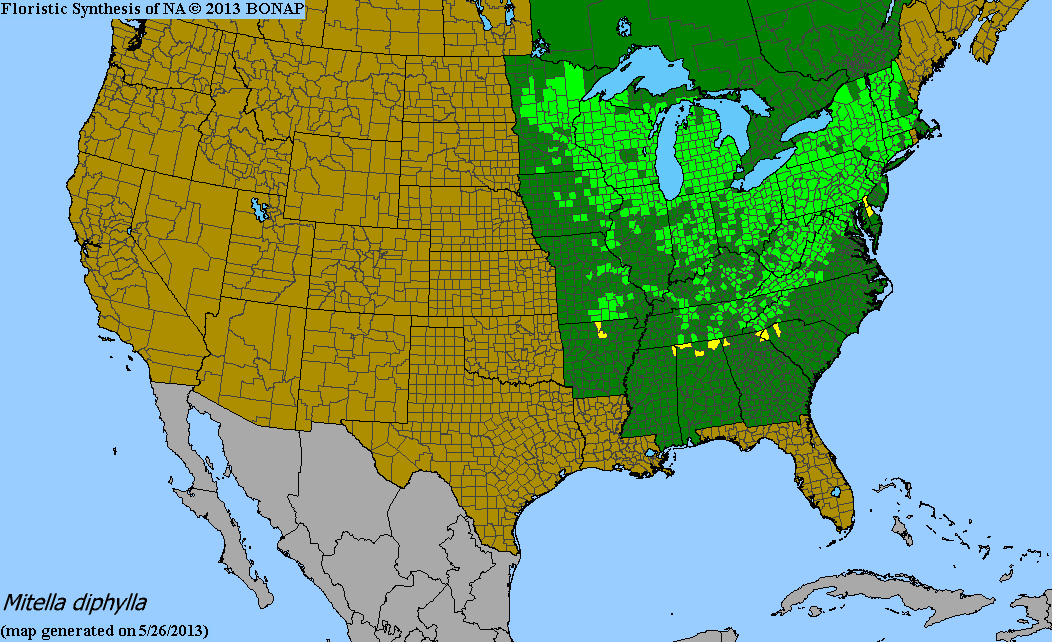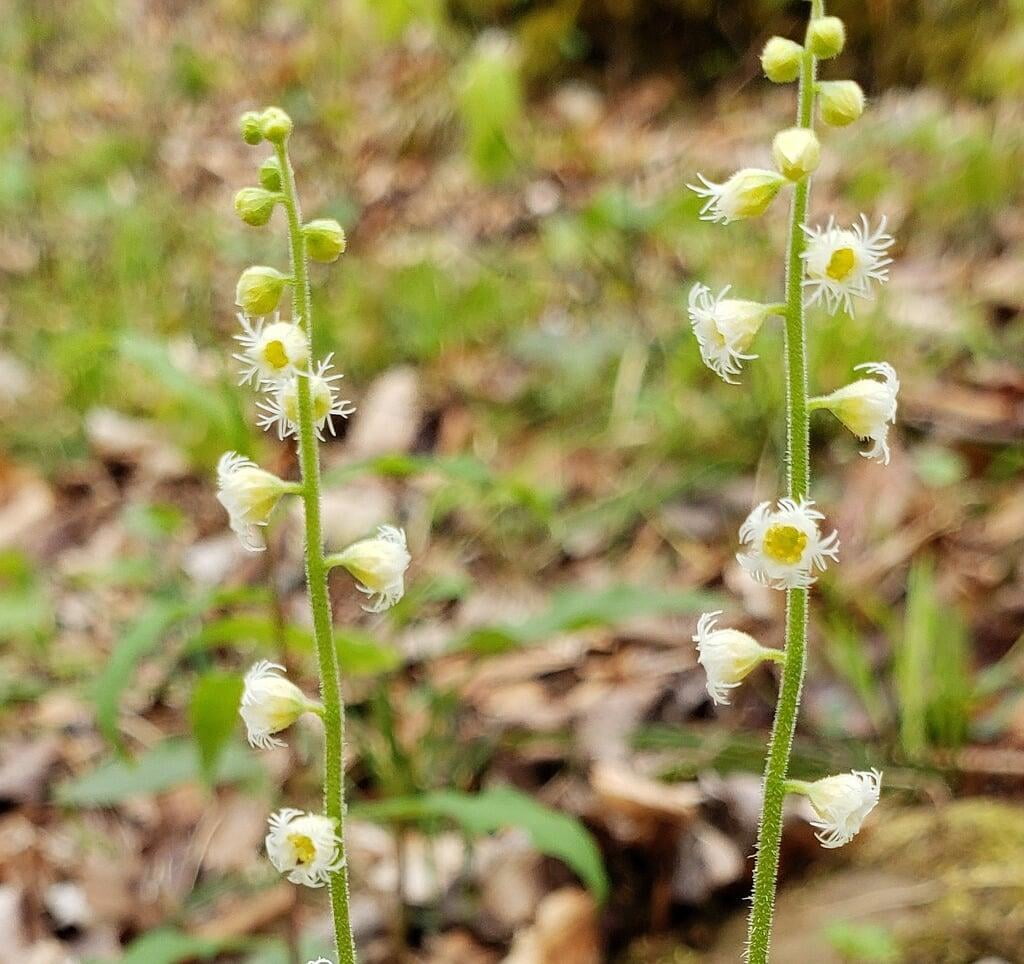Mitella diphylla
Bishop's cap Description:
Mitella diphylla, commonly known as two-leaved miterwort or Bishop's cap, is a small, herbaceous perennial plant native to the woodlands of eastern North America. It belongs to the Saxifrage family (Saxifragaceae) and grows up to 10-18 inches tall.
The plant features a basal rosette of toothed, kidney-shaped leaves with palmate venation that grow up to 4 inches (10 cm) wide. The stem is slender, erect, and bears a small cluster of tiny, white to pinkish flowers in late spring to early summer, with each flower measuring about 1/8 inch (3 mm) in diameter. The flowers have five petals and are held above the leaves on a slender stalk.
Mitella diphylla prefers to grow in shaded or semi-shaded areas with moist soil, such as under trees or in the understory of a forest. The plant is commonly found in the eastern United States and Canada, ranging from Georgia and Alabama in the south, to Nova Scotia in the north, and as far west as Michigan and Minnesota. It is often used in native plant landscaping and is an attractive choice for rock gardens or woodland gardens.
Native Range:
Bishop's cap is found natively across the Midwest and East coast states.
Standard Plant Information:
Plant Height: 10" - 18" inches
Bloom Time: April - June
Preferred Habitat: Does well in part shade to full sun. Often found in rich woods.
Sowing:
For most homeowners, the best option is to scatter seed on the ground by hand broadcasting at a minimum of 16-64 pls ounces per acre. For even coverage, we recommend that you broadcast seed in perpendicular rows across the site to ensure even coverage.
You’ll want to broadcast any grass seed first, which will get raked into the soil lightly. Next, it is ideal to mulch the area lightly with either a clean (no seed) straw or preferably with our native Little Bluestem straw, sold at our retail garden centers. After a light mulching is complete, now it’s time to broadcast your native wildflower seeds, which should not be raked into the soil. A good rain or watering is sufficient to cover the seed.
Planting:
Simply dig a hole in the soil slightly larger than the plant’s roots. Ensure that the soil line of the plant is maintained during the transfer (i.e. the plant should be at the same level with the ground as it was in the pot). Pack any loose dirt back around the plant and make sure you water it well the same day to ensure it has the best chance of survival.










